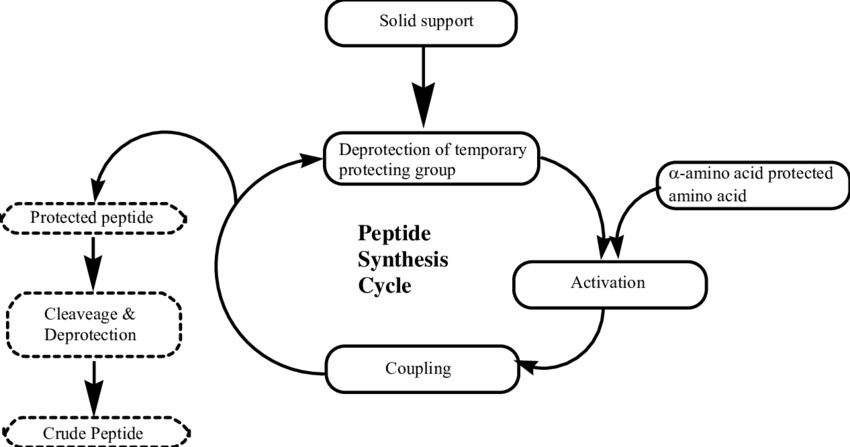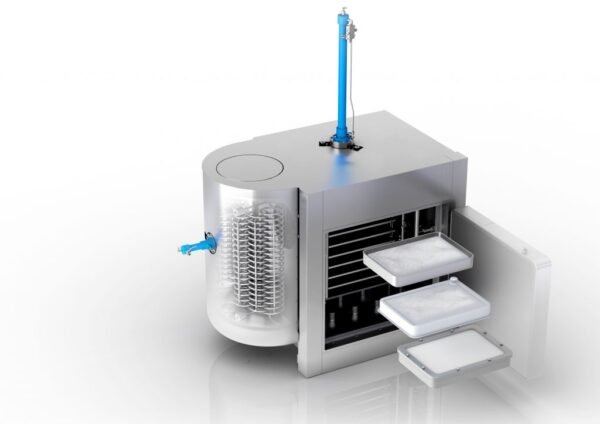Peptides are synthesized using solid-phase peptide synthesis (SPPS) or liquid-phase synthesis, depending on the length and complexity of the peptide.
After synthesis, peptides are purified to remove any synthesis-related impurities, typically through high-performance liquid chromatography (HPLC).


The purified peptide is dissolved in a suitable solvent, often a mixture of water and acetic acid, to form a solution.
The solution may be filtered to ensure purity, removing any particulate matter that could interfere with the drying process or the peptide’s activity.
The peptide solution is rapidly frozen to create a solid state, which is essential for lyophilization.
Freezing can be done at very low temperatures (usually below -40°C) to ensure all water and solvents are solidified.
Proper freezing creates a stable matrix for the peptide, preserving its structure and preventing degradation.


In a vacuum, the frozen solvent is removed by sublimation, directly converting ice into vapor without passing through the liquid phase.
Controlled low temperatures and pressures prevent the peptide from denaturing and maintaining its integrity.
This step removes most of the water content, but the process is kept slow to prevent the peptide’s structure from collapsing.
The temperature is gradually increased under continued vacuum to remove any residual, tightly bound water molecules.
This step further reduces the moisture content, typically below 1-2%, which is ideal for storage stability.


The freeze-dried peptide, now in powder form, is sealed in an inert environment (often under nitrogen gas) to prevent moisture absorption.
Peptides are usually stored at low temperatures to maintain their stability over extended periods.
This freeze-drying process results in a stable, powdered peptide product that can be reconstituted with a suitable solvent when ready for research, making it easier to handle, store, and transport while preserving efficacy.